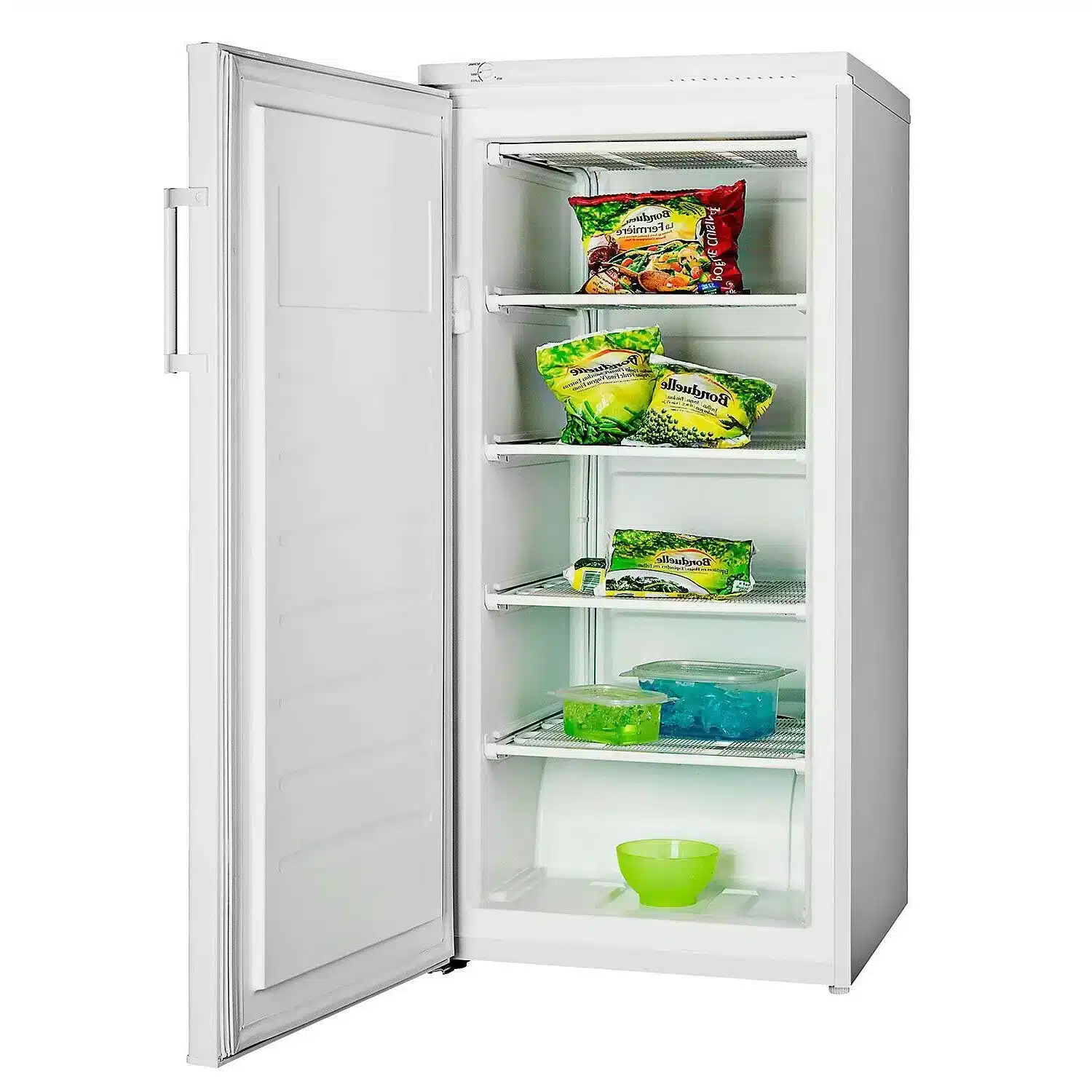
Have you ever opened your freezer and found a layer of frost covering the walls, shelves and food? If so, you’re not alone. Freezer frost is a common problem that can affect the quality of your frozen food, the efficiency of your appliance and even your energy bills. But what causes freezer frost and how can you prevent it? In this post, we’ll explain the reasons behind freezer frost and give you some tips on how to keep your freezer frost-free.
Freezer frost is caused by moisture coming into contact with the cold evaporator coils inside your freezer and then freezing. This can happen due to a damaged or worn-out door seal, leaving the freezer door open too long or not properly shut, placing hot or wet food in the freezer, or having a defective defrost system.
One of the most common causes of freezer frost is a damaged or worn-out door seal, also known as a gasket. The door seal is designed to keep the cold air inside your freezer and the warm air outside. However, over time, the seal can crack, tear or lose its shape, creating gaps that allow warm air to enter and cold air to escape.
When warm air meets cold air, condensation forms. This moisture then freezes on the evaporator coils and other surfaces inside your freezer, creating frost. A faulty door seal can also make your freezer work harder to maintain the temperature, increasing your energy consumption and wear and tear on the appliance.
To prevent freezer frost caused by a damaged or worn-out door seal, you should inspect your seal regularly and replace it if needed. You can check the seal by closing a dollar bill in the door and pulling it out. If there is little resistance, the seal is loose and needs to be replaced. You can also look for cracks, tears or gaps in the seal and feel for cold air leaking out.

Another common cause of freezer frost is leaving the freezer door open too long or not properly shut. Every time you open your freezer door, you let warm air in and cold air out. This creates condensation that freezes on the evaporator coils and other surfaces inside your freezer, forming frost.
The longer you leave the door open, the more warm air you let in and the more frost you create. Similarly, if you don’t close the door properly or if something blocks it from shutting completely, you allow warm air to enter and cold air to escape continuously, creating more frost.
To prevent freezer frost caused by leaving the door open too long or not properly shut, you should limit how often and how long you open your freezer door. You should also make sure that nothing prevents the door from closing fully, such as food items, ice trays or containers. You can also use a thermometer to monitor the temperature inside your freezer and adjust it if needed.
Another common cause of freezer frost is placing hot or wet food in the freezer. When you put hot food in the freezer, you introduce humidity to the unit, which can result in frost forming on the interior walls. When you put wet food in the freezer, such as ice cream cartons or frozen foods that have thawed a bit, you add moisture to the unit, which can also result in frost forming on the interior walls.
To prevent freezer frost caused by placing hot or wet food in the freezer, you should let hot food cool down on the counter until it’s no longer hot, and then refrigerate it to chill further before storing it in the freezer. You should also dry any wet food packages before putting them in the freezer to reduce moisture.
Another common cause of freezer frost is having a defective defrost system. Most freezers have an automatic defrost system that periodically melts any frost that accumulates on the evaporator coils. This prevents excessive frost buildup that can affect the performance of your appliance.
However, sometimes the defrost system can malfunction due to a faulty defrost timer, heater or thermostat. If this happens, your freezer won’t switch between cooling and defrosting cycles properly, and it will create a deep freeze that produces more frost.
To prevent freezer frost caused by having a defective defrost system, you should check your defrost system regularly and replace any faulty parts if needed. You can also manually defrost your freezer by unplugging it and letting the frost melt completely away. Then wipe up all the moisture, let everything dry and plug it back in.
How do I remove freezer frost?
To remove freezer frost, you can use one of these methods:
How often should I defrost my freezer?
The frequency of defrosting your freezer depends on how much frost builds up in your unit. Generally, you should defrost your freezer when the frost layer is about a quarter of an inch thick. This can vary depending on how often you use your freezer, how well you seal it and how humid your environment is.
How can I prevent freezer frost?
To prevent freezer frost, you can follow these tips:
Freezer frost is a common problem that can affect the quality of your frozen food, the efficiency of your appliance and even your energy bills. But by understanding the reasons behind freezer frost and following some simple tips, you can prevent it and keep your freezer frost-free.
